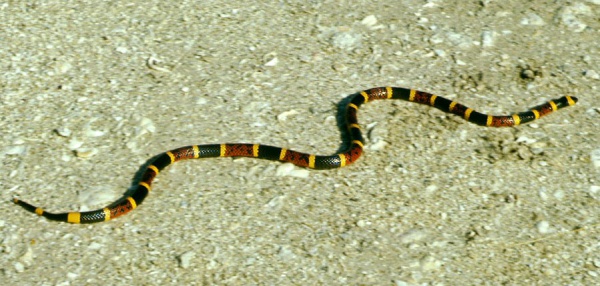Facts About Coral snake
Coral snakes are a captivating group of elapid snakes found in both the Old World and the New World. In the Old World, there are 16 species distributed across three genera, while the New World boasts over 65 recognized species within three genera. Genetic studies suggest that these snakes likely originated in the Old World, with the oldest lineages being Asian.
In North America, coral snakes are easily identified by their distinctive red, yellow/white, and black bands. However, it’s important to recognize that color patterns can be deceptive, as some nonvenomous snakes mimic this appearance. Notable North American species include the Eastern coral snake (Micrurus fulvius), the Texas coral snake (Micrurus tener), and the Sonoran coral snake (Micruroides euryxanthus). These snakes are relatively small, averaging about 3 feet in length. They are known for being elusive, often spending much of their time underground or concealed in leaf litter.
Coral snakes have a diverse diet, preying on smaller snakes, lizards, frogs, birds, and rodents. They utilize small hollow fangs to inject their venom, which is potent enough to paralyze respiratory muscles. Despite their dangerous venom, coral snakes are not aggressive and will bite only if they feel threatened. In the United States, coral snake bites are quite rare, with only 15-25 cases reported each year.
New World coral snakes possess some of the most potent venom among North American snakes. However, due to their reclusive nature and the sparse distribution of their habitats, bites are infrequent. Unfortunately, the production of coral snake antivenom in the U.S. has ceased due to high costs. While foreign manufacturers do produce antivenom, licensing issues have made it difficult to obtain in the U.S.
Old World coral snakes are found across various regions in Asia, within genera such as Calliophis, Hemibungarus, and Sinomicrurus. In the New World, mimicry is common, with many nonvenomous and less toxic snakes adopting similar color patterns to coral snakes to deter predators.

 Uruguay
Uruguay